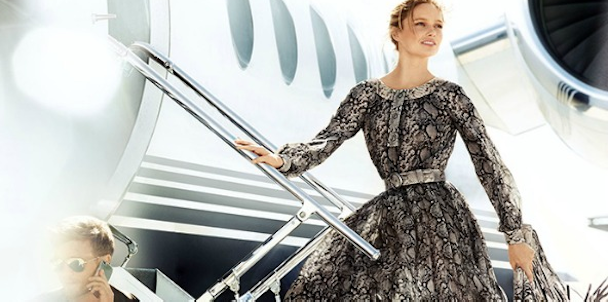How luxury brands are balancing the digital tightrope between aspirational image and conversation
Digital marketing has clearly had a radical effect on how all brands sell their wares to consumers but one sector that has felt this the most is luxury, which has had to figure out a way to communicate with their audiences in a way that doesn’t destroy their core raison d'être.

Once shrouded in exclusivity thanks to glossy print ads and slick celebrity filled television spots, luxury brands such as Burberry, Michael Kors and Aston Martin have reached a turning point in their marketing strategies largely due to the rise of social media. While press is still an important part of many brand’s marketing mix it would be foolish to ignore where your customers are, which is more than likely on Instagram, Twitter or Facebook. However some brands have been wary of embracing digital in fear it could diminish brand equity.
The challenge then is that once the flood gates of conversation have been opened, how do brands maintain their luxury status? “With all luxury brands there has been more investment in digital, and it’s about getting that right balance between aspirational image and conversation, which is something that all luxury brands are working on at the moment,” said Emily Byrne, marketing director of L’Oreal luxury fragrances. “I don’t actually have an example of a brand that’s got all the way there yet, but that will be the big challenge going forward, how do you get the right balance between aspiration and proximity?”
For L’Oreal’s fragrance brands, which include Viktor & Rolf, YSL and Opium, this means looking at the amount and type of content it is pushing through its social channels and also working with bloggers to educate them on how to talk about fragrances, rather than pushing out video content under its own brand name.
“We’re working with bloggers, vloggers and influencers who have the right tone of voice and audience for our brands and working with them on different ways of talking about the brands and exciting them in the way we would traditional press in the past. We’re also making sure our content is relevant, engaging and shareable.”
Over at Michael Kors, the American fashion brand recently launched a campaign aimed to give consumers a taste of the brand’s ‘jet-set world’. The campaign included a content rich website, social media, global advertising, brand marketing and traditional print and outdoor advertising built around the sophistication and glamour of living a jet-set lifestyle.
“The campaign was designed to speak to our customers globally in an authentic voice, always emphasizing our luxury DNA, ultimately marrying brand equity and awareness and translating that into conversion,” said John Idol, chairman and chief executive of Michael Kors during the fashion house’s earnings call last month. The brand was also the first to use Instagram’s new video advertising capabilities in the UK with a series of video clips showing off its new footwear range.
Burberry of course has been championing digital for some time and was an early adopter among its luxury peers of user generated content when it launched its own social platform Art of the Trench in 2009. Fast forward six years and the British heritage brand has lifted the veil and created entry points for fashion fans outside the purchase path via live- streamed fashion shows, the interactive Google campaign ‘Burberry Kisses’ as well as embraced emerging platforms such as Snapchat and Periscope. And the success of all this activity is clear to see: in the 12 months up to the end of March, Burberry reported sales of £2.5bn, an 11 percent rise on the year before and said that digital had “outperformed” expectations yet again.
In L2’s recently released annual fashion brand ranking, Burberry snagged the top spot among the top 83 brands in the US, including Kate Spade, Ralph Lauren and Coach, after tripling digital sales associated to mobile thanks to an enhanced digital offering.
According to the report online sales of luxury goods account for 6 per cent of the €224bn global luxury market. In 2014, online sales increased 55 per cent year on year representing 80 per cent of the sector's annual growth. While the results show that luxury brands should be focussing their efforts on digital, the report warned that the channel shift from offline presents a risk to traditional luxury houses as brand loyalty does not transfer proportionately online. While offline sales remain fragmented, online sales are concentrated with less than ten brands driving 65 per cent of site traffic, found the report.
Another brand figuring out where it lies in the digital space is London department store Liberty, which is currently redesigning its website to reflect the luxury and personalised experience it offers shoppers in store, while hero-ing some of the personalities at the company.
“It’s a difficult job having to translate that beautiful experience in our stores into our digital website,” said Esther Allen, Liberty’s customer marketing director at the Content Marketing Association conference last week (3 December). “What we’re doing is making sure that those personalities come through. On our new site you’ll be able to shop and edit the products handpicked by those personalities in our business and get a flavour of why they’ve chosen it. That whole story is totally interwoven into all of our product pages and into our edits and getting that sense of why we’ve handpicked those products.”
There’s no question that the digital space has opened up a plethora of opportunities for brands to drive sales and revenue and bring more customers in to the fold. In the luxury space brands need to create a dialogue that gives consumers different entry points in to the brand without compromising the core values that make luxury brands what they are.

